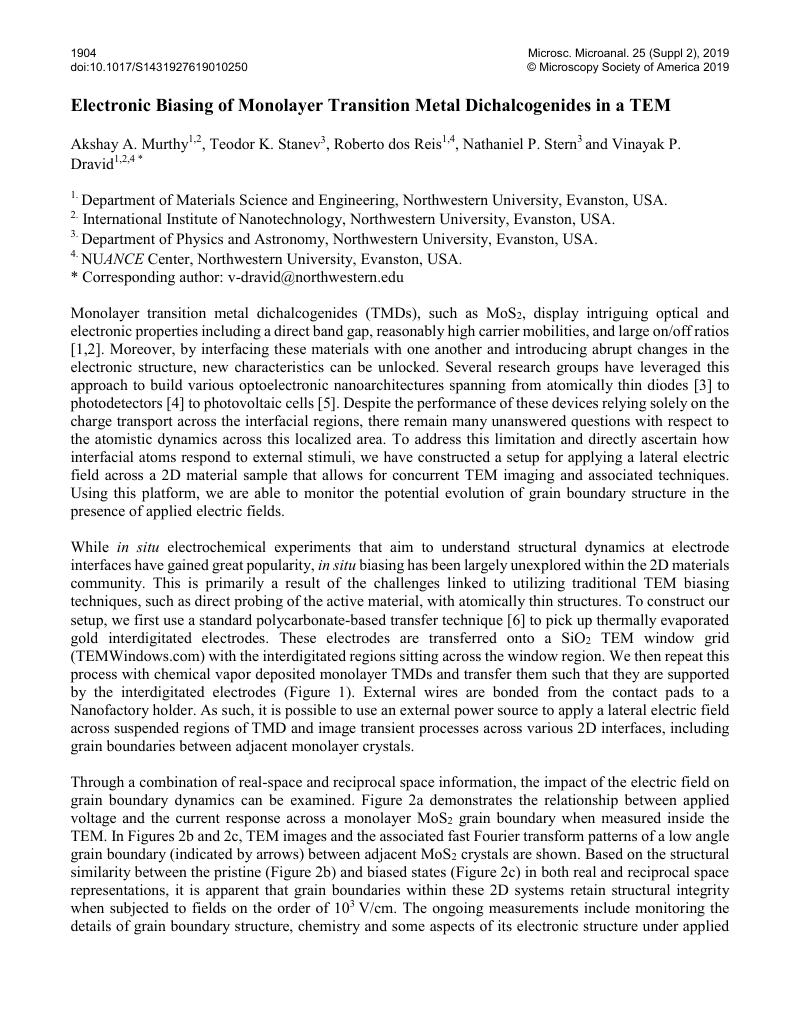No CrossRef data available.
Article contents
Electronic Biasing of Monolayer Transition Metal Dichalcogenides in a TEM
Published online by Cambridge University Press: 05 August 2019
Abstract
An abstract is not available for this content so a preview has been provided. As you have access to this content, a full PDF is available via the ‘Save PDF’ action button.

- Type
- In situ TEM of Nanoscale Materials and Electronic Devices for Phase Transformation Studies
- Information
- Copyright
- Copyright © Microscopy Society of America 2019
References
[7]This material is based upon work supported by the NSF (DMR-1507810) and made use of the EPIC facility of Northwestern University's NUANCE Center, which has received support from the Soft and Hybrid Nanotechnology Experimental (SHyNE) Resource (NSF ECCS-1542205); the MRSEC program (NSF DMR-1720319) at the Materials Research Center; the International Institute for Nanotechnology (IIN); the Keck Foundation; and the State of Illinois, through the IIN. A.A.M. gratefully acknowledges support from the Ryan Fellowship and the IIN at Northwestern University.Google Scholar




